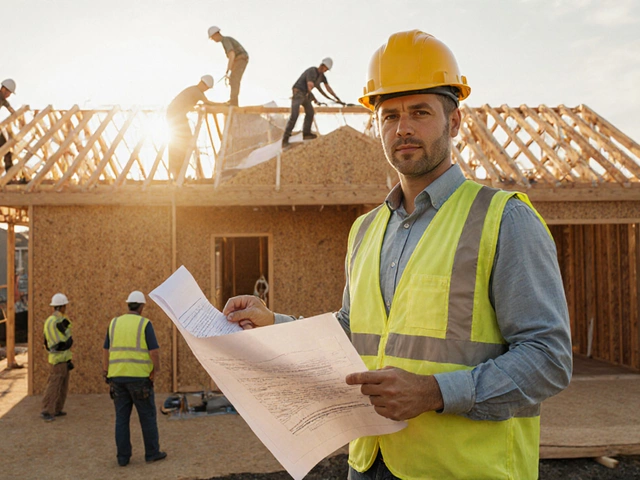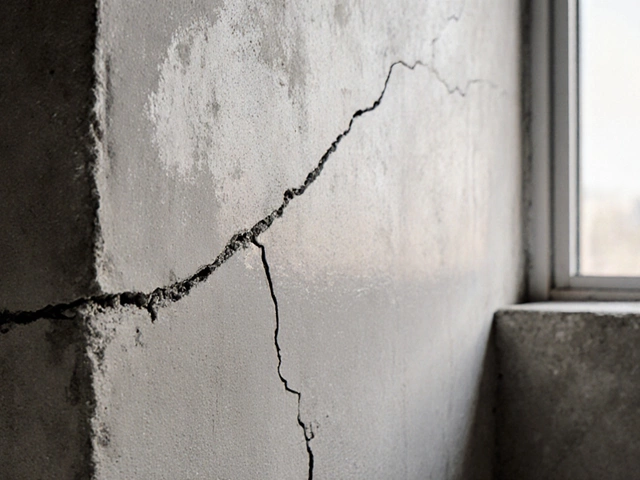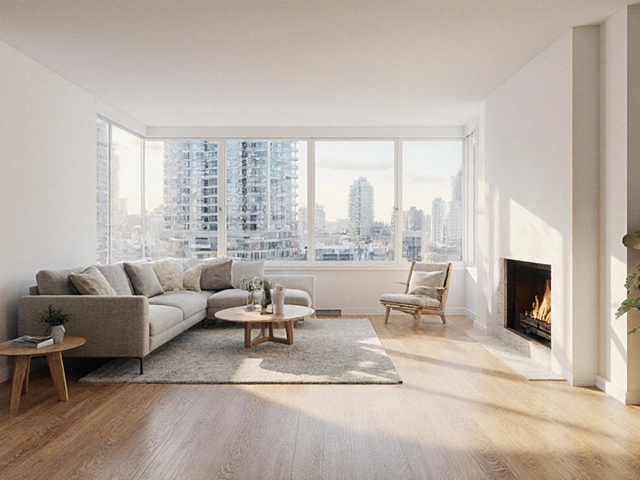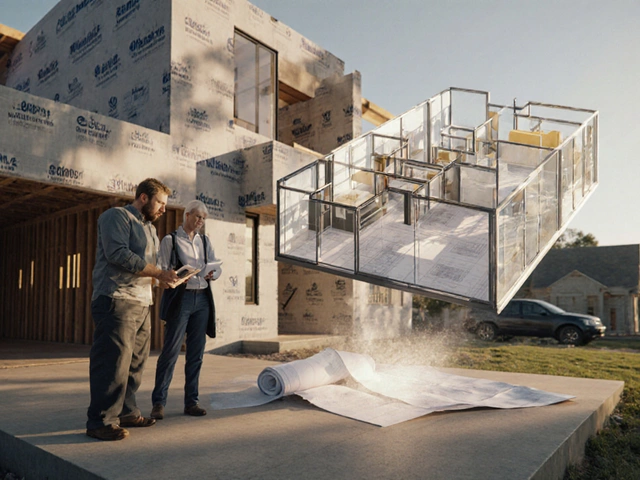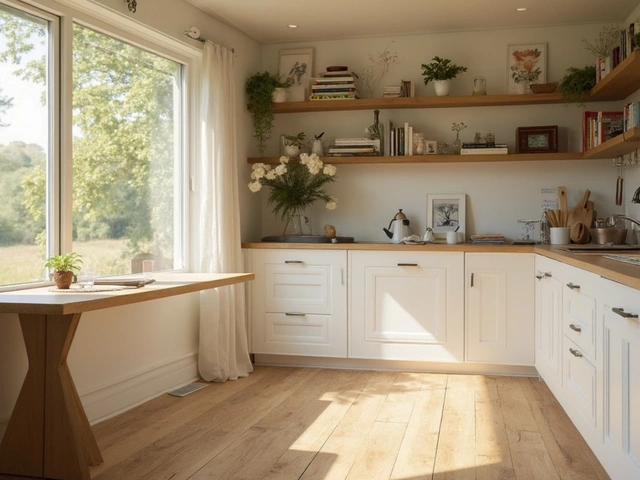Deciding whether to build a house is a significant financial decision, one that comes with its own set of challenges and rewards. It's not just about bricks and mortar; it's about weighing the costs now against the benefits in the future.
For many, the allure lies in the ability to design a home that perfectly suits their needs and desires. But customization can sometimes lead to higher costs if one isn't careful. And while building a home can initially seem more expensive than buying one, the potential for equity growth over time and the freedom to tailor your living space to your lifestyle can make it a wise investment.
In this read, we delve into every aspect of building a home, from understanding where your money goes to ensuring you're making a smart investment for the future. Whether you're dreaming of a cozy nook for family time or a sprawling space for entertaining, there's more to consider than just the upfront price tag.
- Understanding the Costs
- Customization Versus Cost Efficiency
- Long-term Financial Benefits
- Impact on Property Value
- Potential Pitfalls and How to Avoid Them
- Smart Tips for Home Building
Understanding the Costs
When considering the financial aspect of building a home, the first thing that typically comes to mind is the construction cost per square foot. This figure can vary significantly depending on location, materials chosen, and the design's complexity. For instance, urban areas with high demand like New York City or San Francisco usually incur higher expenses compared to more rural locations. It’s important to get a detailed breakdown from your contractor or architect early in the planning process to avoid unexpected surprises. According to the U.S. Census Bureau, the average cost to construct a single-family home is approximately $296,652. This number, however, can fluctuate widely based on numerous factors.
Equally crucial is understanding the potential hidden costs that new builders might overlook. These often include land acquisition fees, which can be more substantial than anticipated, especially if the plot requires leveling or extensive clearing. In addition, impact fees — costs imposed by local governments to cover infrastructure improvements — can add to the financial burden. Other significant but less visible costs might involve permits, which can range from a few hundred to several thousand dollars depending on local regulations. Home building is not only about laying bricks and mortar but entails numerous regulatory hurdles that can affect your budget.
A detailed cost analysis would be incomplete without considering financing and interest rates. Most people cannot afford to pay outright from their savings, making loans a cornerstone of the home-building process. The terms you secure will dramatically impact your long-term financial outlook. A loan interest rate difference of even one percent can equate to thousands of dollars over the life of a 30-year mortgage. It’s worth consulting multiple lenders to secure the best possible rate and terms. Historically, interest rates have fluctuated between three and five percent, but economic conditions in 2024 might warrant close monitoring.
"Building a home requires not just financial capital, but also a deep understanding of potential risks and costs involved," says financial expert John Villari, highlighting the need for thorough research and planning.
Finally, insurance and contingency funds are crucial elements of the budget that cannot be ignored. Building a home is inherently risky due to unexpected construction delays or issues that might arise. Home insurance during the building phase is an essential cost to protect your investment against unforeseen damages. Additionally, a contingency fund, usually around 10% of the project's total cost, is advisable to cover unexpected expenses or design changes during the build. Failing to account for these potential extras can strain finances and potentially derail the project.
Customization Versus Cost Efficiency
When it comes to constructing a new house, the possibility of customization often becomes a tantalizing prospect for prospective homeowners, offering the freedom to create living spaces that cater specifically to personal tastes and family needs. Yet, this very allure of customization can also mask potential financial traps if not carefully monitored. Building a home from scratch affords the opportunity to pick everything exactly to your liking, from layout to the tiniest details like fixtures and finishes. This can indeed result in a dwelling that is uniquely yours, but it also often comes with a cost premium. Builders will affirm that customization invariably means deviations from stock plans, which can swiftly drive costs upward.
"The beauty of building your own home lies in the countless design possibilities," says Emma Jacobs, a renowned architect with decades of experience in the field. "But keep in mind, each little tweak might carry a hefty price tag."
The key lies in striking a harmonious balance between personal desire and cost efficiency. It requires a focused approach to determine what changes provide the greatest impact both aesthetically and practically, without blowing out the budget. Standard plans are usually more budget-friendly due to the economies of scale they operate under and the predictability of construction timelines. Custom projects often face the risk of unforeseen expenses and potential delays, which can erode financial resources and even the most serene patience.
One practical approach is to prioritize alterations that significantly enhance value or functionality. For instance, upgrading kitchen appliances or opting for energy-efficient materials can add appreciable long-term value. According to the National Association of Home Builders, kitchens consistently offer the best return on investment due to their central role in family life and resale appeal. Consider the principle that small tweaks with a large impact—like adjusting floor plans for open-concept living, which is currently in high demand—can offer a substantial boost in both livability and resale value without excessive costs.
| Room | Potential ROI |
|---|---|
| Kitchen | 81% |
| Bathroom | 70% |
| Living Room | 60% |
Moreover, another strategy is to evaluate the local housing market to identify trends. Understanding what features are valued in your specific area can guide your customization choices to ensure they align with buyer expectations if you ever decide to sell. Talk to local realtors to gain insight into what is desirable in your community. This market research can prevent over-personalizing choices that may not appeal to future buyers, thereby safeguarding your financial investment.
Every decision in customization involves a trade-off, and being well-informed about where to splurge and where to save will lead to both a satisfying and financially sound home building experience. Incentivizing choices based on genuine need rather than whim is what keeps the customization process aligned with financial sensibility. This balanced approach ensures that the dream of a home constructed just for you does not become a financial nightmare.
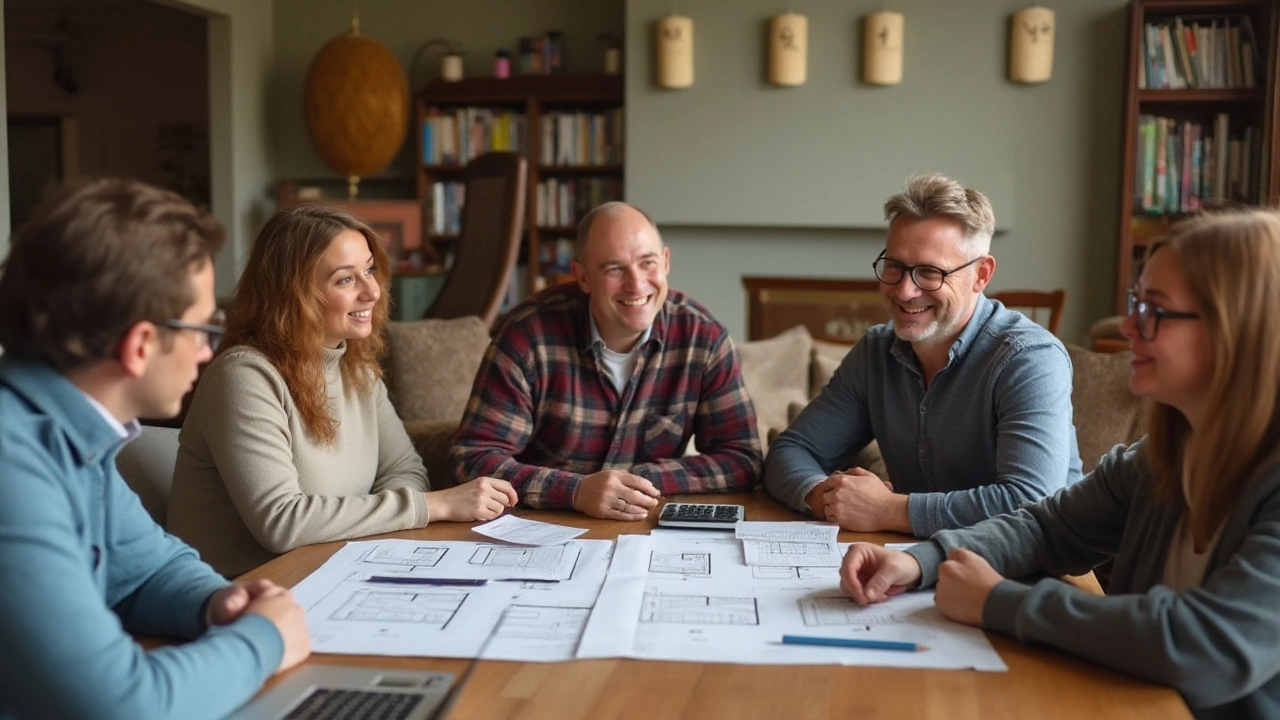
Long-term Financial Benefits
Embarking on the journey of building your own home comes with not just the joy of personalizing every nook and corner but also reaping considerable financial benefits over the long term. One of the key advantages is the potential for generating substantial equity. From the moment the ground is broken on your project, you begin adding value to your property, which tends to appreciate over time. As markets fluctuate, real estate consistently remains a solid investment, promising growth with adequate maintenance and improvements. Unlike a pre-existing structure, a new house can often outpace older homes in value due to modern amenities, energy efficiency, and appealing design trends.
An additional benefit of home construction is tailor-making spaces that reduce unnecessary costs in the future. By designing with sustainable materials and efficient systems, many homeowners witness lower utility bills, which effectively increases savings. New homes are typically built with newer technology and design advances, ensuring adherence to current building codes that are more energy-efficient. As a prospective builder, you have the chance to incorporate solar panels, smart home systems, and other sustainable solutions that can reduce overhead costs significantly.
Another aspect to consider is the control over ongoing maintenance costs. Constructing a home from scratch means you can choose durable materials that minimize repair needs in the future. With everything being new, maintenance tasks and unexpected repair expenses tend to be lower in the first few years compared to older homes. The advantage lies in having warranties for new appliances and systems, which can save homeowners from significant out-of-pocket costs. Importantly, as you make payments on a constructed home, you're building equity rather than paying off interest, which is often higher in the initial stages of a mortgage for a pre-existing home.
As a case in point, investment guru Warren Buffet once noted,
"The best investment you can make is an investment in yourself. The more you learn, the more you'll earn."In a home-building context, this could translate to learning about cost-efficient ways to build and maintain a home, which would certainly boost economic gains in the future. Additionally, numerous financial analysts continue to point out that new builds hold a competitive advantage in resale value, often commanding a higher market price because they cater to the latest living standards and aesthetics.
To further delve into the specifics, consider a scenario where market appreciation aligns with construction quality. A well-built home in a desirable neighborhood could see value increment by as much as 5-7% annually depending on location and housing demand, translating to a handsome gain on your initial outlay. Here's how a simple projection might look:
| Initial Investment | Annual Appreciation Rate | Value After 10 Years |
|---|---|---|
| $300,000 | 5% | $488,668 |
| $400,000 | 6% | $716,391 |
These numbers justify why building a home could be a savvy financial investment over the long haul. Therefore, if approached with diligence, foresight, and proper financial guidance, building your own house can certainly turn into a cornerstone of stability and prosperity for future generations.
Impact on Property Value
When you embark on the journey of building a home, one major factor to consider is how this decision impacts the property value both immediately and in the future. Right from the moment the foundation is laid, potential value appreciation begins rooted in the land’s worth, the structure’s quality, and the strategic location. It’s a dance of factors, each influencing the final property evaluation. The process is not just about getting something up to live in, but understanding the nuances of market conditions and how they affect long-term value. The neighborhood in which the property sits plays a pivotal role. Opting for a location in an up-and-coming area with projected growth could potentially maximize property value, making it a lucrative investment over the years.
Landscaping can also play a significant role in increasing property value. A well-thought-out garden or outdoor space can elevate the aesthetic appeal of the home architecture significantly. Moreover, sustainability features are becoming increasingly crucial, boosting the home's worth. Modern buyers and investors prioritize eco-friendly designs, which can include everything from solar panels to energy-efficient appliances. Such features not only enhance everyday living but also add tangible value, appealing to environmentally conscious buyers seeking long-term savings on utility bills.
Then there’s the building’s durability and design. A study from the National Association of Home Builders highlights that homes with modern design and robust construction typically demand higher prices in the market. The growing popularity of open floor plans, large kitchens, and smart home technology suggests these features can considerably uplift a home's market worth. It’s essential to keep in mind the resale angle; a home that ticks all the boxes for current market trends will better hold its value and possibly fetch a higher price.
The appraisal of a property's worth often lies in its appeal to potential buyers. As real estate expert Barbara Corcoran notes, "Location creates desirability, desirability creates demand, and demand raises the price of real estate." This sentiment underscores the importance of a carefully chosen setting and design elements that appeal widely in the market.The quality of materials and craftsmanship is another critical component influencing a home's property value. Using premium materials ensures the structure stands the test of time, attracting potential buyers who value quality. An extensively documented build with guarantees and warranties further adds to the reliability and perceived value of the property.
Moreover, let’s talk about timing. The time at which the home enters the market can greatly influence its value. An economic uptrend might mean higher property prices, while a downturn could affect even the best-laid properties adversely. Monitoring real estate trends and forecasting what buyers will want when the house might someday be on the market is key. Building in a seller’s market, for instance, often means better prospects of securing a higher valuation.
A critical aspect is certainly considering modern sustainability features, which increasingly rank as a desired trait among buyers. Ensuring the property includes green energy solutions, energy-efficient windows, and sustainable materials often leads to enhanced market value. Not only does this reduce the carbon footprint, but it also appeals to a growing demographic that values eco-friendly living. With these factors balanced well, a newly built home may see its value grow well beyond just the sum of its parts.
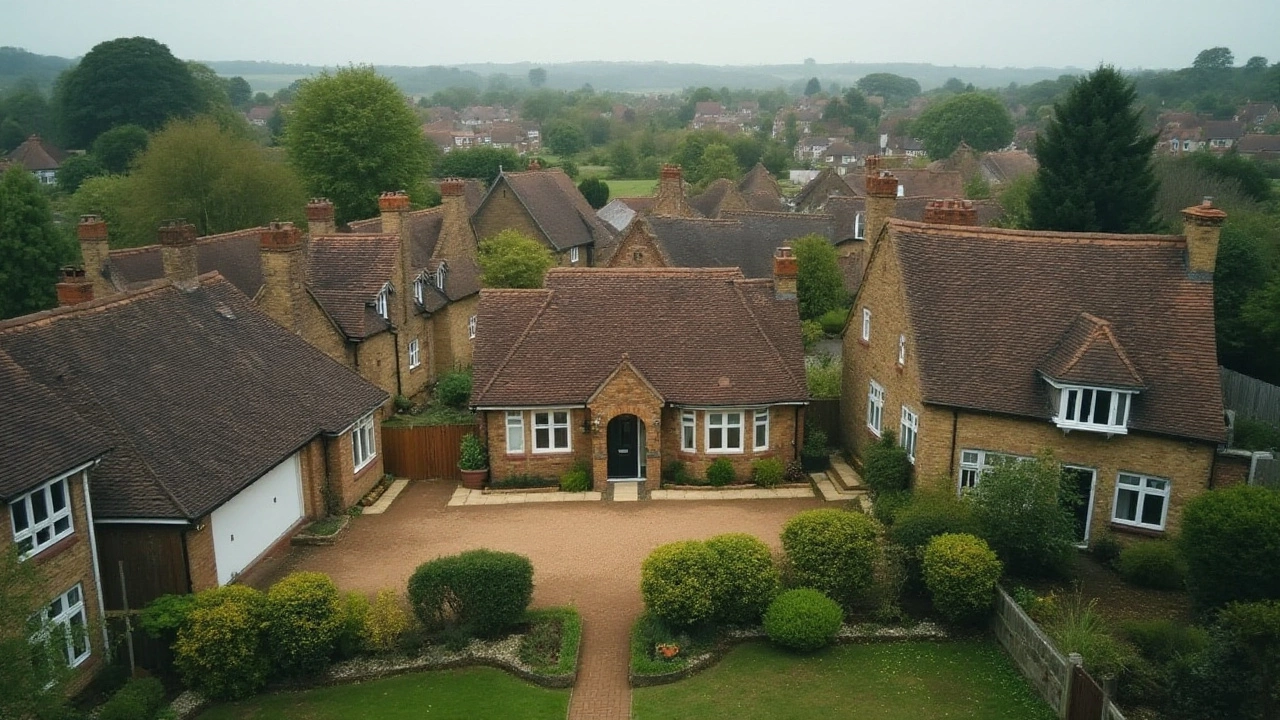
Potential Pitfalls and How to Avoid Them
Embarking on the journey of building your own home is filled with excitement and potential, but it’s essential to tread carefully to avoid common hurdles that can turn dreams into distress. The process is complex with numerous elements that can go askew if not properly managed. One notable misstep is underestimating the cost of building a home. Many first-time builders find themselves overwhelmed by the hidden expenses that can arise during construction. These may include unexpected upgrades due to local building codes, unforeseen site preparation costs, or price changes in materials.
Another significant pitfall is failing to vet contractors thoroughly. It's tempting to hurry the process and hire the first contractor with a catchy ad, but diligence in selecting a reputable, experienced builder cannot be overstated. Spending time on research, reading reviews, and obtaining recommendations is crucial. You should be wary of contractors promising unrealistic timelines or suspiciously low bids, which often translate to shortcuts in quality or unexpected add-ons later.
Plan and Prep Properly
One of the best ways to avoid pitfalls is to enter the planning phase with clear, realistic expectations. Many people find themselves entrapped by the allure of customization, leading to design choices that stretch their budgets beyond sustainable limits. Engage with your contractor in a transparent discussion about costs and timelines. Create detailed plans early and resist last-minute changes, as these often lead to increased costs and delays.
"Failing to plan is planning to fail." - Alan Lakein
Another strategy is acquiring a builder's insurance. This offers peace of mind, covering unforeseen events that might otherwise result in financial strain. Verifying insurance coverage with your builder is also non-negotiable; an uninsured project could leave you liable should accidents occur during the build.
Regulations and Logistics
A critical mistake is neglecting the importance of permits and local regulations. Each region has specific requirements that must be adhered to, and failing to secure the proper permissions can lead to expensive legal hassles. Research ahead of time or consult with a professional who understands local zoning laws, building codes, and inspection requirements. Additionally, ensuring your timeline includes contingency for delays in obtaining necessary permits helps prevent frustration.
Homeowners must also address logistical challenges that arise during the building process. Proper scheduling of materials and construction phases is paramount. An error in sequencing can lead to bottlenecks, wasted labor, and unused rented equipment, all of which inflate costs. Maintaining a comprehensive project timeline, updated regularly, allows you to track progress, identify potential delays early, and adjust strategies accordingly.
Finally, understanding the importance of comprehensive contracts cannot be understated. A well-structured contract specifies all terms, including payment schedules, timelines, and the scope of work, thus ensuring accountability. Without this, both parties may face ambiguity and disputes that can derail the project.
In conclusion, while the pitfalls of building a home are numerous, they are not insurmountable. Approaching the project with thorough research and careful planning, along with selecting partners of integrity and ensuring compliance with regulations, sets the stage for a successful and rewarding home building experience. Remember, the effort invested up front is an investment in your future home and peace of mind.
Smart Tips for Home Building
Embarking on the journey to build your own home is both exciting and daunting. Whether you're motivated by the prospect of a customized living space or the long-term financial gains, it's crucial to approach this venture with careful planning and informed decisions. One of the first things to consider is establishing a realistic budget that accommodates not only major expenses like materials and labor but also the unexpected costs that often arise. It's helpful to allocate a contingency fund, usually around 10-15% of your total budget, to cover unforeseen expenses without jeopardizing your financial stability. By keeping a close watch on your budgetary limits, you can avoid common pitfalls such as overspending on non-essential features or underestimating the scope of your project's requirements.
Another key aspect is choosing the right team to bring your vision to life. Selecting a reputable contractor and architect can make a huge difference in the quality and efficiency of your build. When evaluating professionals, don't just focus on quotes. Also, examine their previous work, ask for references, and consult online reviews to get a fuller picture of their reputations. Building a home involves numerous decisions about design and functionality, and having experienced partners at your side can help you navigate these choices with assurance. Don't be afraid to interview multiple candidates to find the right fit for your project.
"The foundation of a happy home is built on the expertise and integrity of your team," advises respected architect Sarah Holden.
One crucial but often overlooked consideration is the long-term financial investment of your home in terms of maintenance and sustainability. Incorporating energy-efficient systems and sustainable materials isn't just beneficial for the environment; it lowers utility bills and increases your home's value. Consider options like solar panels, high-efficiency HVAC systems, and well-insulated windows not just as add-ons, but as core components of your home. Over time, the savings generated from these investments can be substantial, offsetting initial costs and providing cost-effective benefits.
Lastly, ensure you're vigilant about paperwork and legalities. From permits and zoning laws to insurance policies, having your documentation in order is critical. Each aspect of the bureaucratic process is necessary to protect your project from potential legal issues and delays. It's wise to consult legal professionals or advisors if you're unfamiliar with local regulations. By maintaining a clear and organized trail of all documents, you can manage your home construction benefits responsibly and safeguard your investment from unforeseen problems down the line.
Integrating these smart tips as you navigate the complexities of building a new home will help pave the way toward a successful and financially rewarding project. While the path may be fraught with challenges, the outcome can offer a lifetime of satisfaction and stability, leading to a home that's not just a dwelling but a testament to your aspirations and hard work.

